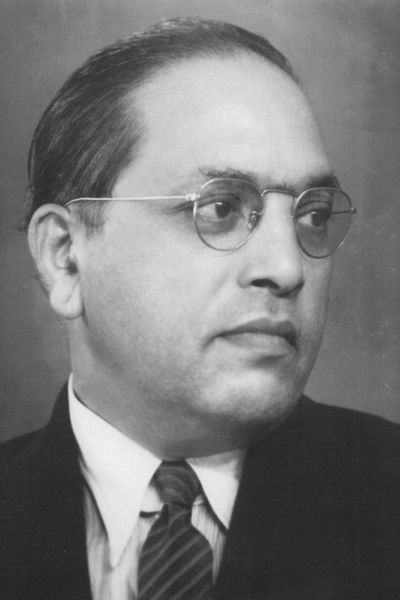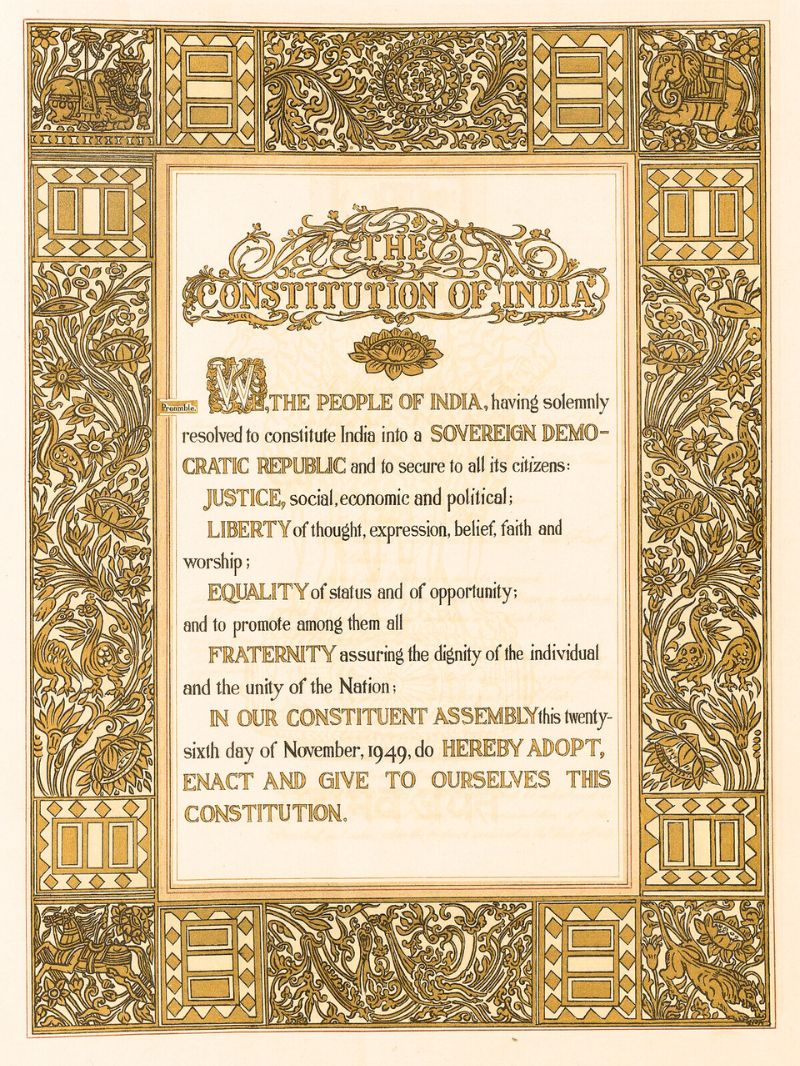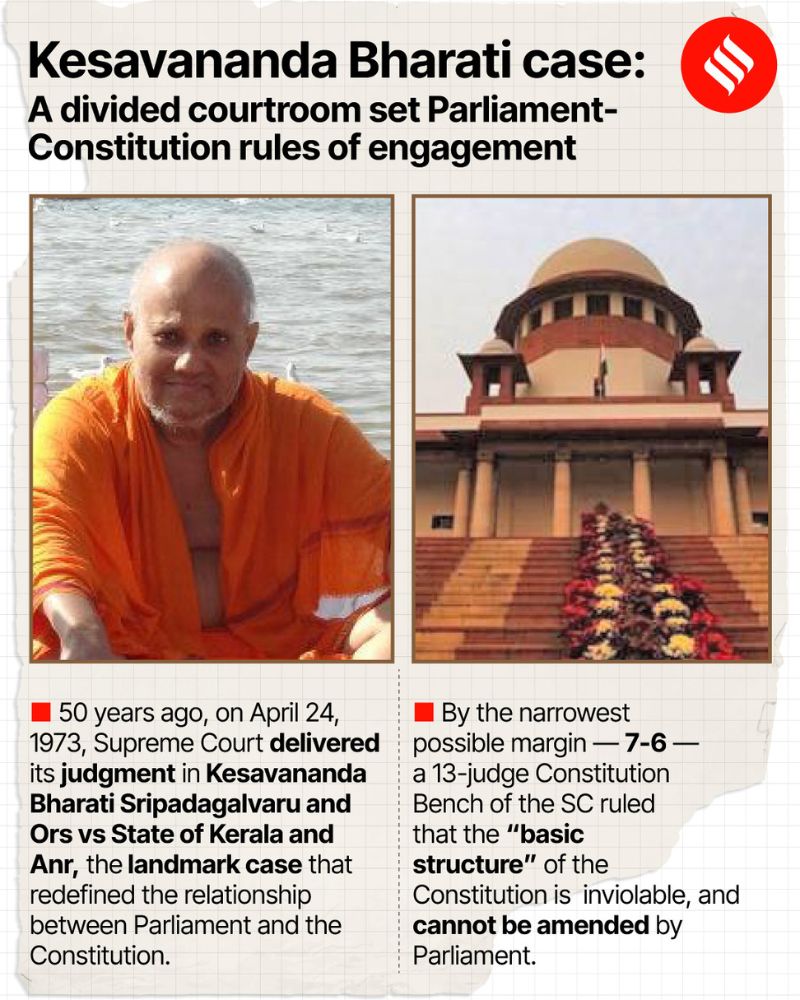The Constitution of India is the supreme law of the land, laying the foundation for the country’s legal and political framework. Understanding the important facts about Indian Constitution helps us appreciate its significance in our daily lives.
Here, we will discuss the interesting facts about the Constitution of India, from its history and structure to unique aspects and landmark amendments. By learning these essential details, we gain a deeper appreciation for the document that governs and guides our nation.
Important Facts About Indian Constitution
The following are the top 10 facts about constitution of India:
1. Longest Written Constitution
The Indian Constitution is the longest written constitution of any sovereign nation in the world, containing 448 articles in 25 parts, 12 schedules, and 104 amendments as of now.
2. Influences from Other Constitutions
The Indian Constitution draws extensively from various sources, including the British, American, Irish, and Canadian constitutions. For example, the concept of Fundamental Rights was borrowed from the US Constitution.
Some of the concepts taken from other countries are:
- Directive Principles Of State Policy – Ireland
- Fundamental Rights – American Constitution
- Liberty, Equality and Fraternity (Preamble) – France
- Five Year Plans (FYP) – USSR
- Preamble – the United States of America
- Procedure established by Law – Japan
3. Dr. B.R. Ambedkar’s Role
Dr. B.R. Ambedkar, known as the “Father of the Indian Constitution,” was the Chairman of the Drafting Committee and played a crucial role in formulating the document.

4. Handwritten and Illustrated
The original copies of the Indian Constitution were handwritten in Hindi and English. These copies were beautifully illustrated by artists from Shantiniketan under the guidance of Nandalal Bose.
5. Preamble as the Essence
The Preamble of the Indian Constitution outlines its core values: Justice, Liberty, Equality, and Fraternity. It serves as an introduction to the Constitution’s principles and objectives.

6. Fundamental Rights and Duties
The Constitution grants Fundamental Rights to protect individual liberties and freedoms. Additionally, the 42nd Amendment introduced Fundamental Duties for citizens to uphold the spirit of patriotism and unity.
7. Amendability
The Indian Constitution is both rigid and flexible. It can be amended as needed, with some parts requiring a simple majority and others needing a special majority in Parliament.
8. Unique Blend of Federal and Unitary Features
The Indian Constitution establishes a federal system with a strong central government, blending both federal and unitary characteristics to maintain national unity and integrity.
9. Directive Principles of State Policy
Inspired by the Irish Constitution, the Directive Principles of State Policy guide the government in making policies and laws aimed at creating a just society, although they are not enforceable by courts.
10. Basic Structure Doctrine
The Supreme Court of India established the Basic Structure Doctrine in the Kesavananda Bharati case (1973), ruling that certain fundamental aspects of the Constitution cannot be altered by amendments, ensuring its core principles remain intact.

Related Post: Constitution Day of India
Interesting Facts About Indian Constitution
The following are top 10 amazing facts about Indian constitution:
1. Initial Framework from the Government of India Act, 1935
The Indian Constitution adopted many provisions from the Government of India Act, 1935, which served as an initial framework for governing the country.
2. Two-Year, Eleven-Month Drafting Period
The Constituent Assembly took almost three years to complete the drafting process, specifically two years, eleven months, and eighteen days, starting from December 9, 1946, to November 26, 1949.
3. First Amendment in 1951
The first amendment to the Indian Constitution was made in 1951, addressing land reform and protecting laws related to it from being challenged as violating Fundamental Rights.
4. Bifurcation of Subjects
The Constitution divides legislative powers between the Union and State governments through three lists: the Union List, State List, and Concurrent List, each detailing subjects under their respective jurisdictions.
5. Presidential Assent Requirement
For a constitutional amendment to come into effect, it must receive the President’s assent after being passed by both Houses of Parliament.
6. Special Provisions for Certain States
Articles 370 and 371 of the Constitution provide special provisions for the states of Jammu and Kashmir and certain other states, granting them unique autonomy and rights.
7. Original Copies in the Library of Parliament
The original handwritten copies of the Indian Constitution are preserved in helium-filled cases in the Library of Parliament House in New Delhi to ensure their longevity.
8. Women’s Representation in Constituent Assembly
The Constituent Assembly of India included 15 women members, who contributed significantly to the drafting process, advocating for women’s rights and social reforms.
9. Dual Citizenship Prohibition
Unlike some countries, the Indian Constitution does not allow dual citizenship. Indian citizens cannot hold citizenship of another country simultaneously.
10. Emergency Provisions
The Constitution includes detailed provisions for declaring a state of emergency under three conditions: war or external aggression, internal disturbance, and financial instability. These provisions grant extensive powers to the central government during emergencies.
Suggested Reading:
Lawyer Ram Jethmalani: Top Cases, Career, Fees, Books, All Details
FAQs About Indian Constitution Facts
Below are some of the common questions related to facts about the constitution of India:
The Indian Constitution is the supreme legal document that lays down the framework for the political principles, procedures, powers, and duties of government institutions and sets out Fundamental Rights, Directive Principles, and Fundamental Duties of citizens.
The Indian Constitution is the longest written constitution because it contains 448 articles in 25 parts, 12 schedules, and 104 amendments, covering a wide range of governance aspects.
Dr. B.R. Ambedkar is known as the Father of the Indian Constitution due to his crucial role as the Chairman of the Drafting Committee and his significant contributions to its formulation.
The Directive Principles of State Policy are guidelines for the government to follow in order to establish a just society. They are not enforceable by law but are considered fundamental in the governance of the country.
Fundamental Duties are moral obligations for Indian citizens, such as respecting national symbols and promoting harmony. They were introduced by the 42nd Amendment in 1976.
The Indian Constitution is structured into 25 parts, with 448 articles and 12 schedules. It includes provisions for fundamental rights, directive principles, and the distribution of powers between the Union and State governments.
The Preamble outlines the core values and objectives of the Constitution, declaring India as a Sovereign, Socialist, Secular, Democratic Republic, and emphasizing Justice, Liberty, Equality, and Fraternity.
The Indian Constitution drew influences from various constitutions, including the British, American, Irish, and Canadian constitutions. For instance, Fundamental Rights were inspired by the US Constitution, and the Directive Principles were inspired by the Irish Constitution.
The Union and State Lists in the Indian Constitution divide legislative powers between the Union and State governments. The Union List covers subjects under the central government’s jurisdiction, the State List covers subjects under the state governments’ jurisdiction, and the Concurrent List includes subjects where both can legislate.
The Constitution of India was formed by the Constituent Assembly, which consisted of 299 members who were elected by the provincial assemblies. The drafting committee, chaired by Dr. B.R. Ambedkar, played a key role in its formulation.
The Indian Constitution was adopted on November 26, 1949.
India has only one Constitution, which is the supreme law of the land.
The Constitution of India came into force on January 26, 1950.
The Indian Constitution was made through extensive discussions and debates in the Constituent Assembly, which held 11 sessions over a period of two years, eleven months, and eighteen days. The drafting committee reviewed various constitutions from around the world and incorporated relevant elements.
The real, original handwritten copies of the Indian Constitution are preserved in helium-filled cases in the Library of Parliament House in New Delhi.
India needs a constitution to provide a legal framework for governance, protect Fundamental Rights, maintain law and order, establish the structure of government, and ensure justice, liberty, equality, and fraternity among its citizens.
Read Next:


